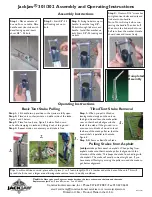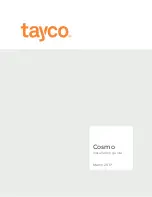
www.tdt.com
Functional Design of the MicroStimulator System
System Set-up.
To connect the stimulator system hardware:
Mini-DB26 Connector Stim Out Pinouts
Pin
Channel
Pin
Channel
1
1
14
Digital Strobe
2
2
15
GND
3
3
16
GND
4
4
17
Digital Data
5 Digital Clock
18
HSD
6
HSD
19
HSD
7
5
20
6
8
7
21
8
9
9
22
10
10
11
23
12
11
13
24
14
12
15
25
16
13
+20 V
26
-20 V
Note:
Do not attempt to make any custom
connections to pins 6, 18, or 19. These pins are
intended for TDT use only. Pins 9-12, 22-25 not
used on the IZ2H.
RZ Base Station
Real-time DSP generates
digital stimulation and
control waveforms
IZ2/IZ2H
Stimulator generates
analog current or
voltage waveforms
Optional
Headstage
Stimulating
Electrodes
PC
High Speed Interface
Software control and
data transfer
Fiber Optic Connection
Transfers control information and digital signals for
stimulation to IZ2/IZ2H, returns actual stimulation voltage to
RZ for monitoring
Input from sensors
(RA8GA) or recording
electrodes (PZ2/
RA16PA)
Current or voltage
output to headstage
LZ48-200/400
Battery Pack
Optional
PreAmp
Important!
Make
sure pins align
with connector.
1. Setup and configure the rest of your system.
2. Connect the battery pack cable to the back panel of
the stimulator via the connector labeled Battery, as
shown in the diagram below.
Warning!:
Shorting the battery connection pins can
cause damage to the device and injury to the user.
Always use caution when handling or connecting the
devices.
3. Connect the stimulator to the base station using the
provided fiber optic cable.
4. Connect the fiber optic cable from the IZ2/IZ2H
fiber optic port labeled Fiber to the fiber optic port
labeled To IZ2 on the back side of the RZ. Be sure to
note the difference in the two sides of the fiber optic
cable connectors and ensure they are inserted with the
correct side up.
5. Connect the DB26 output connectors on the
stimulator to the stimulating electrodes.




















